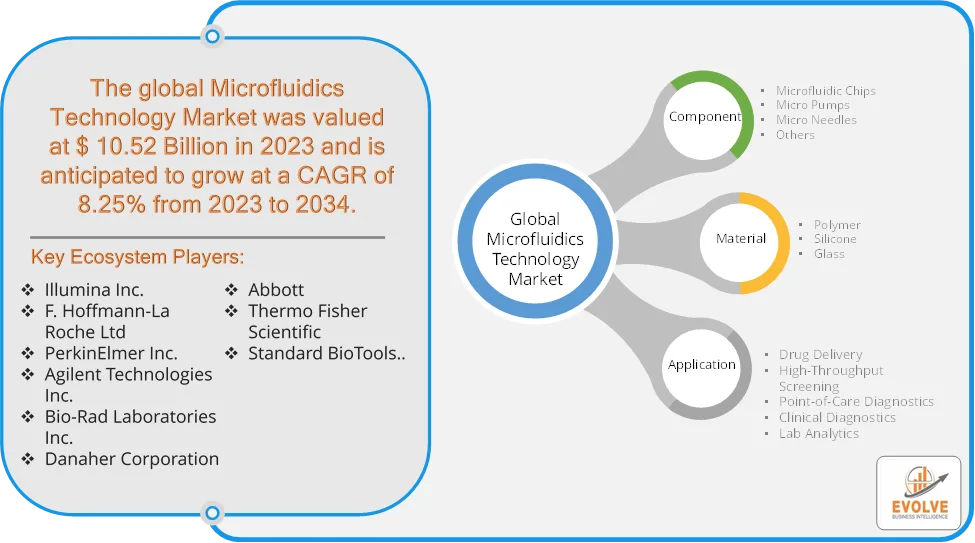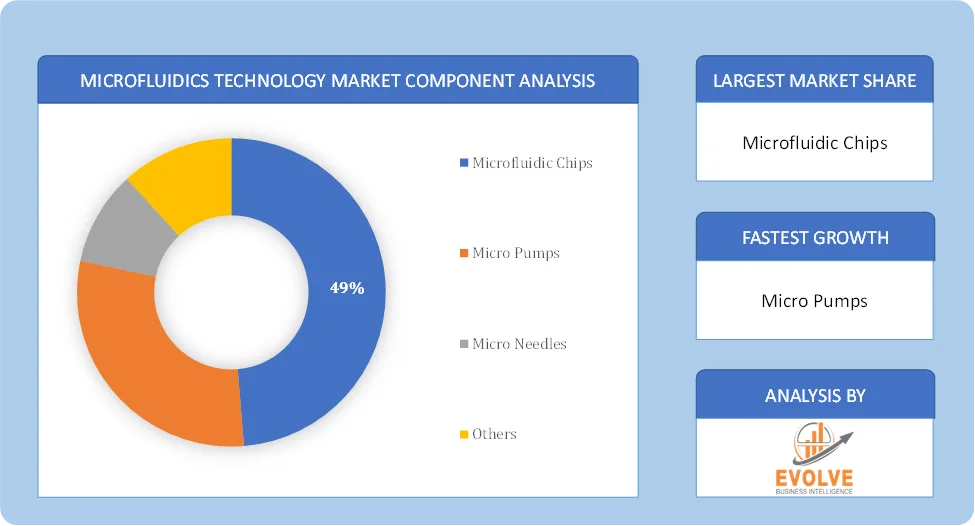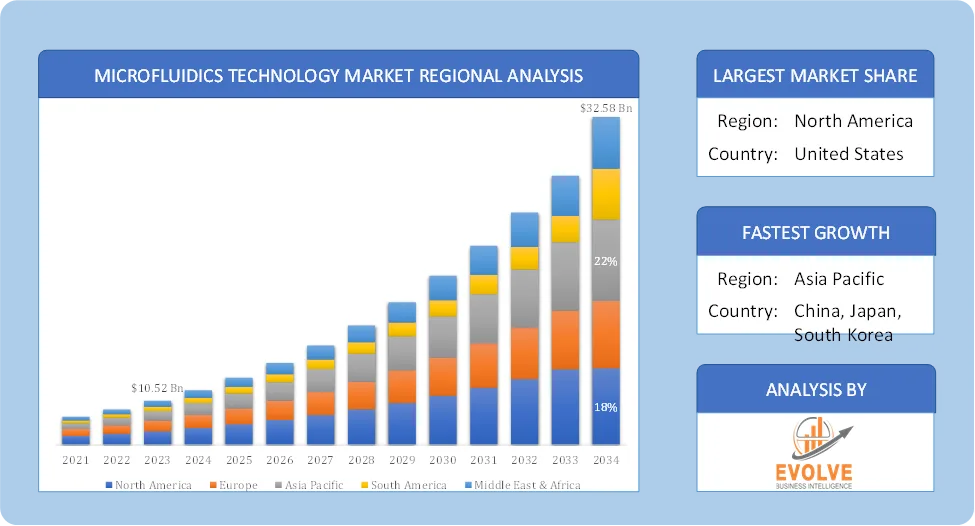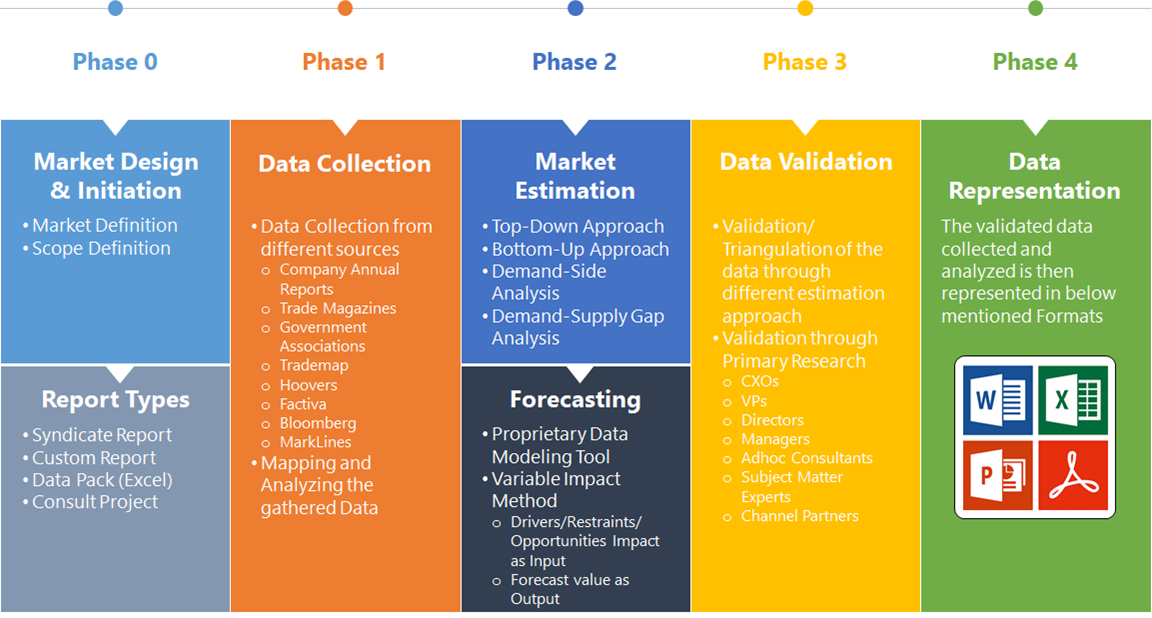Microfluidics Technology Market Overview
The Microfluidics Technology Market size accounted for USD 10.52 Billion in 2023 and is estimated to account for 16.01 Billion in 2024. The Market is expected to reach USD 32.58 Billion by 2034 growing at a compound annual growth rate (CAGR) of 8.25% from 2024 to 2034. The microfluidics technology market is experiencing significant growth and is projected to continue its upward trajectory in the coming years. Microfluidics involves the manipulation of minuscule amounts of fluids within channels that are typically on the micrometer scale (one millionth of a meter). This technology offers numerous advantages over traditional methods, including reduced reagent and sample consumption, faster analysis times, higher precision, and the potential for automation and integration into portable devices.
The microfluidics technology market is a dynamic and rapidly growing field driven by the increasing demand for advanced diagnostic tools, technological innovations, and the growing adoption of lab-on-a-chip and organ-on-a-chip technologies across various industries, particularly healthcare and pharmaceuticals.
Global Microfluidics Technology Market Synopsis
 Microfluidics Technology Market Dynamics
Microfluidics Technology Market Dynamics
The major factors that have impacted the growth of Microfluidics Technology Market are as follows:
Drivers:
Ø Growing Demand for Point-of-Care Diagnostics
The increasing prevalence of chronic diseases (such as diabetes, cardiovascular diseases, and cancer) and infectious diseases necessitates rapid and accurate diagnostic solutions closer to the patient. Microfluidic devices enable the miniaturization of laboratory functions onto a single chip, allowing for complex diagnostic tests to be performed outside traditional laboratory settings with minimal sample volumes (e.g., from a fingerprick) and this is particularly beneficial for patients in remote locations, reducing travel time and costs, and enabling real-time monitoring for timely treatment decisions. Continuous innovation in microfluidic technologies is expanding their capabilities and applications and leading to higher precision, efficiency, and reliability in device manufacturing.
Restraint:
- High Initial Investment and Development Costs
Developing and manufacturing sophisticated microfluidic devices often requires significant upfront investment in research, design, prototyping, and specialized equipment. The cost of microfabrication, especially for complex chip designs and high-precision requirements, can be substantial and this high initial cost can be a barrier for smaller companies, startups, and research institutions with limited funding and Integrating new microfluidic technologies and devices into established laboratory and clinical workflows can face resistance due to the need for new training, equipment, and protocols.
Opportunity:
⮚ Advancements in Pharmaceutical and Biotechnology Research
Microfluidic platforms offer significant advantages for HTS, enabling the rapid and cost-effective screening of large compound libraries with minimal reagent consumption. This accelerates the drug discovery process. Microfluidic devices enable the isolation and analysis of individual cells, providing valuable insights into cellular heterogeneity, disease mechanisms, and drug responses at a resolution not possible with bulk assays. This is crucial for cancer research, immunology, and neuroscience. Microfluidic principles are integral to the development of advanced microneedle patches for painless and efficient transdermal drug delivery. These systems can offer controlled release and improved patient compliance.
Microfluidics Technology Market Segment Overview
Based on Component, the market is segmented based on Microfluidic Chips, Micro Pumps, Micro Needles, and Others. The Microfluidic Chips segment dominant the market. This is attributed to their high potential and versatility across a wide array of applications in life science, biomedical research, drug delivery, immunoassays, and diagnostics and the increasing demand for miniaturized, cost-effective lab-on-a-chip solutions is a significant driver for the growth of this segment.
By Material
Based on Material, the market segment has been divided into Polymer, Silicone, and Glass. The Polymer segment dominant the market. The demand for polymer-based microfluidic devices is driven by their versatility, cost-effectiveness, ease of fabrication, and suitability for a broad range of applications, especially in diagnostics and life science research. Polymers are generally less expensive than other materials like glass and silicon, making them attractive for mass production and disposable applications.
By Application
Based on Application, the market segment has been divided into Drug Delivery, High-Throughput Screening, Point-of-Care Diagnostics, Clinical Diagnostics, and Lab Analytics. The Point-of-Care Diagnostics segment dominant the market. Microfluidic devices enable significantly faster analysis compared to traditional lab-based methods due to the small volumes and short diffusion distances involved. This allows for quicker clinical decision-making and timely treatment initiation.
Global Microfluidics Technology Market Regional Analysis
Based on region, the global Microfluidics Technology Market has been divided into North America, Europe, Asia-Pacific, the Middle East & Africa, and Latin America. North America is projected to dominate the use of the Microfluidics Technology Market followed by the Asia-Pacific and Europe regions.
 North America Microfluidics Technology Market
North America Microfluidics Technology Market
North America holds a dominant position in the Microfluidics Technology Market. Significant investments in research and development activities, particularly in the pharmaceutical and biotechnology sectors. Increasing demand for point-of-care diagnostics for chronic diseases and infectious diseases and favorable government policies supporting the adoption of advanced medical technologies. It had Well-established healthcare infrastructure and high healthcare spending.
Asia-Pacific Microfluidics Technology Market
The Asia-Pacific region has indeed emerged as the fastest-growing market for the Microfluidics Technology Market industry. Rapidly developing healthcare infrastructure and increasing healthcare expenditure and growing prevalence of chronic and infectious diseases, leading to higher demand for diagnostic tools. Rising awareness and adoption of advanced medical technologies. Increasing investments in research and development, particularly in countries like China and India and Government initiatives to upgrade the industrial and healthcare sectors.
Competitive Landscape
The global Microfluidics Technology Market is highly competitive, with numerous players offering a wide range of software solutions. The competitive landscape is characterized by the presence of established companies, as well as emerging startups and niche players. To increase their market position and attract a wide consumer base, the businesses are employing various strategies, such as product launches, and strategic alliances.
Prominent Players:
- Illumina Inc.
- Hoffmann-La Roche Ltd
- PerkinElmer Inc.
- Agilent Technologies Inc.
- Bio-Rad Laboratories Inc.
- Danaher Corporation
- Abbott
- Thermo Fisher Scientific
- Standard BioTools.
Key Development
October 2023: Abbott Laboratories unveiled its innovative new diagnostic device i-STAT Alinity Analyzer- an on-demand diagnostics device using microfluidics technology to perform multiple tests with one sample sample.
September 2023: Roche Diagnostics announced the debut of its Cobas Liat POC system utilizing microfluidics technology for HIV and syphilis testing at point-of-care diagnostic device.
Scope of the Report
Global Microfluidics Technology Market, by Component
- Microfluidic Chips
- Micro Pumps
- Micro Needles
- Others
Global Microfluidics Technology Market, by Material
- Polymer
- Silicone
- Glass
Global Microfluidics Technology Market, by Application
- Drug Delivery
- High-Throughput Screening
- Point-of-Care Diagnostics
- Clinical Diagnostics
- Lab Analytics
Global Microfluidics Technology Market, by Region
- North America
- US
- Canada
- Mexico
- Europe
- UK
- Germany
- France
- Italy
- Spain
- Benelux
- Nordic
- Rest of Europe
- Asia Pacific
- China
- Japan
- South Korea
- Indonesia
- Austalia
- Malaysia
- India
- Rest of Asia Pacific
- South America
- Brazil
- Argentina
- Rest of South America
- Middle East & Africa
- Saudi Arabia
- UAE
- Egypt
- South Africa
- Rest of Middle East & Africa
| Parameters | Indicators |
|---|---|
| Market Size | 2034: USD 32.58 Billion |
| CAGR (2024-2034) | 8.25% |
| Base year | 2022 |
| Forecast Period | 2024-2034 |
| Historical Data | 2021 (2017 to 2020 On Demand) |
| Report Coverage | Revenue Forecast, Competitive Landscape, Growth Factors, and Trends |
| Key Segmentations | Component, Material, Application |
| Geographies Covered | North America, Europe, Asia-Pacific, South America, Middle East, Africa |
| Key Vendors | Illumina Inc., F. Hoffmann-La Roche Ltd, PerkinElmer Inc., Agilent Technologies Inc., Bio-Rad Laboratories Inc., Danaher Corporation, Abbott, Thermo Fisher Scientific and Standard BioTools. |
| Key Market Opportunities | · Advancements in Pharmaceutical and Biotechnology Research · Innovation in Drug Delivery Systems |
| Key Market Drivers | · Growing Demand for Point-of-Care Diagnostics · Technological Advancements in Microfluidics |
REPORT CONTENT BRIEF:
- High-level analysis of the current and future Microfluidics Technology Market trends and opportunities
- Detailed analysis of current market drivers, restraining factors, and opportunities in the future
- Microfluidics Technology Market historical market size for the year 2021, and forecast from 2023 to 2033
- Microfluidics Technology Market share analysis at each product level
- Competitor analysis with detailed insight into its product segment, Government & Defense strength, and strategies adopted.
- Identifies key strategies adopted including product launches and developments, mergers and acquisitions, joint ventures, collaborations, and partnerships as well as funding taken and investment done, among others.
- To identify and understand the various factors involved in the global Microfluidics Technology Market affected by the pandemic
- To provide a detailed insight into the major companies operating in the market. The profiling will include the Government & Defense health of the company’s past 2-3 years with segmental and regional revenue breakup, product offering, recent developments, SWOT analysis, and key strategies.








